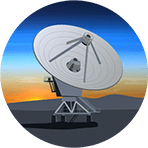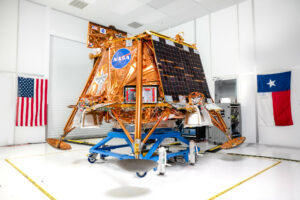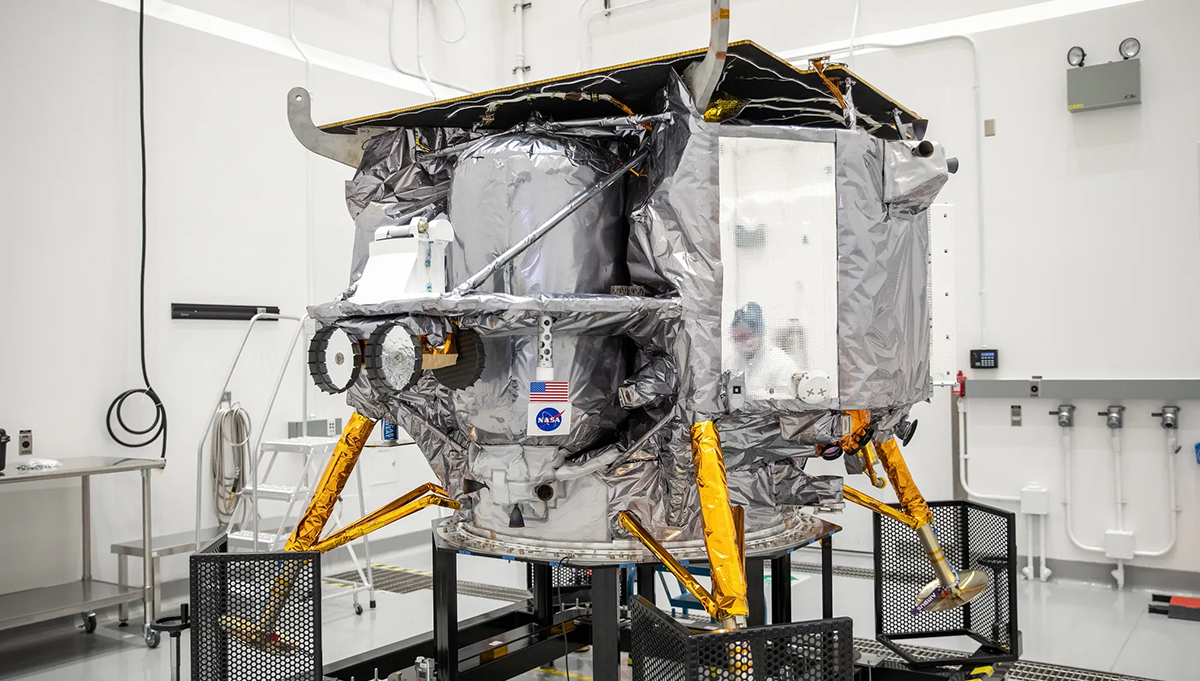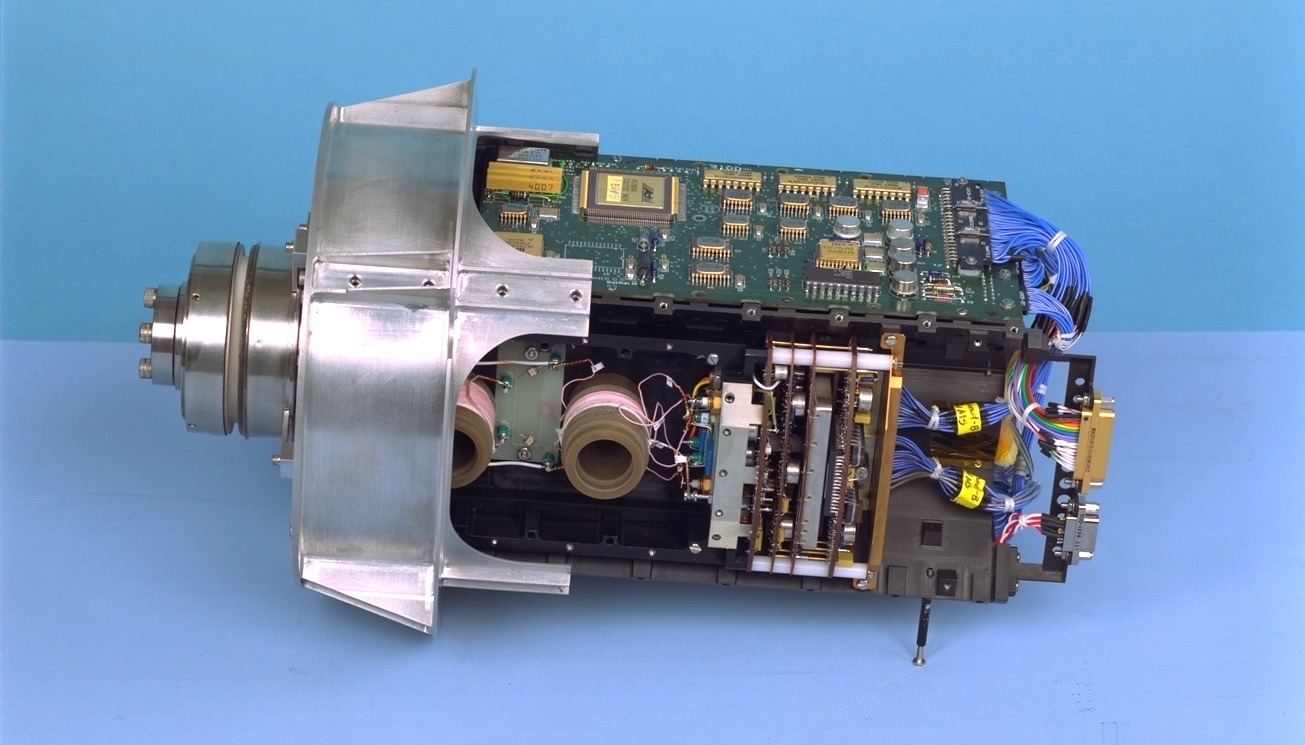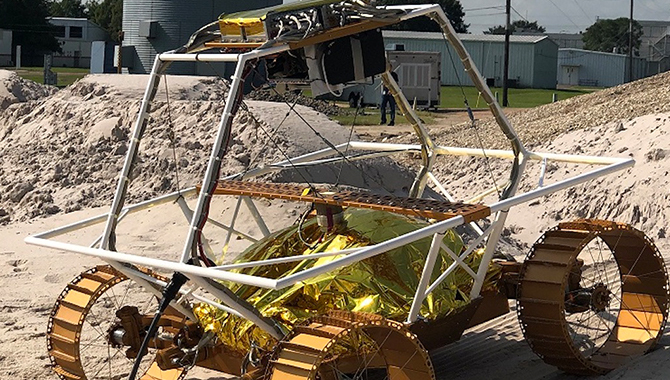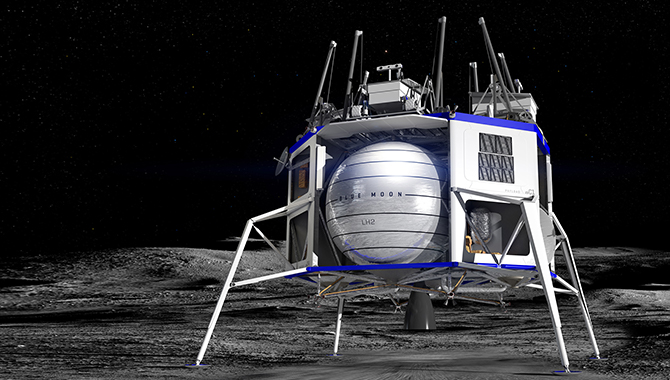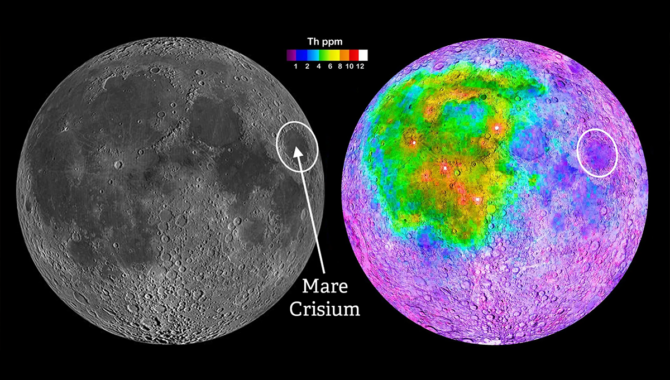
The Blue Ghost lander will attempt to land in the Mare Crisium, an impact basin that may provide NASA with the first geophysical measurements that are representative of the bulk of the Moon. Research indicates that the Apollo missions landed in a region that is compositionally distinct from the rest of the lunar surface.
Credit: NASA
Third spaceflight in the program will carry a varied NASA payload of scientific instruments to the lunar surface.
Mare Crisium is a vast plain of basalt stretching for 68,000 square miles over the surface of the Moon. Nearly the size of Missouri, it is the scar left behind when a massive asteroid impacted the lunar surface several billion years ago, and the crater flooded with dark, igneous lava. It is a stark reminder of the chaos of the early solar system and the Moon’s volatile, volcanic past.
Within the plain is a low, rounded volcanic dome known as Mons Latreille. From above, it looks like a comma, rising nearly 500 feet above the surrounding mare and extending about 4 miles in diameter. Its origins are likely tied to the waning stages of the volcanic activity that once filled Mare Crisium with molten rock.
This distinctive site is the target of a spacecraft launched aboard a SpaceX Falcon 9 rocket on January 15, lighting the night sky along Florida’s Space Coast shortly after 1 a.m. Its 45-day journey to the Moon is the first spaceflight of Firefly Aerospace’s Blue Ghost lunar lander, part of NASA’s Commercial Lunar Payload Services (CLPS) initiative.
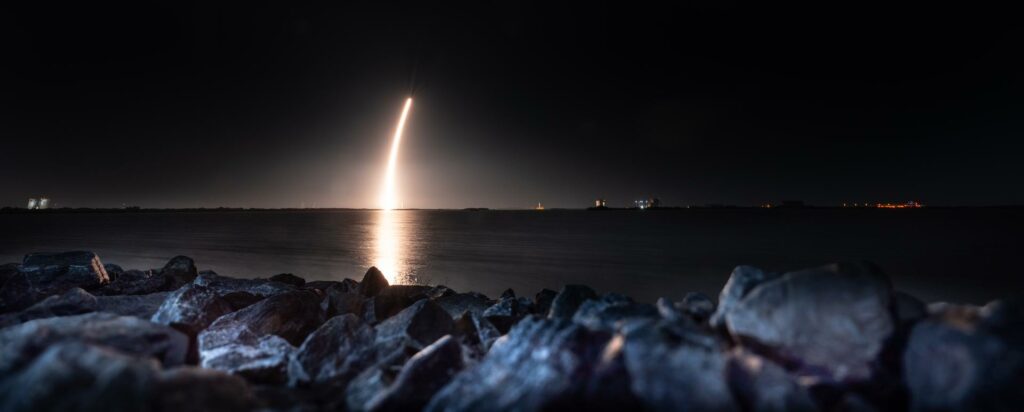
Creating a golden streak in the night sky, a SpaceX Falcon 9 rocket carrying Firefly Aerospace’s Blue Ghost Mission One lander soars upward after liftoff from Launch Complex 39A at NASA’s Kennedy Space Center in Florida on Wednesday, Jan. 15, 2025. Credit: NASA/Cory S. Huston
“CLPS is a one-stop, all-inclusive delivery service to the Moon where NASA is just one of many customers along for the journey,” said Dr. Nicky Fox, Associate Administrator for NASA’s Science Mission Directorate, speaking at a NASA press conference. “The CLPS vendor, in this case, Firefly, is responsible for payload integration and operations, launching from Earth, and landing on the surface of the Moon.”
NASA has partnered with 14 aerospace companies to develop lunar landers that can deliver scientific instruments and technology demonstrations to the Moon in support of Artemis. CLPS leverages the capabilities and innovations of commercial companies to help develop a robust lunar economy and support the Artemis campaign in establishing a sustained human presence at the Moon.
The Blue Ghost lunar lander is about 6.6 feet tall and 11.5 feet in diameter, with a box-shaped framework supported by four landing legs. The lander features a customizable interior with multiple mounting options for payloads and equipment. It has a payload capacity of up to 330 pounds and is equipped with solar panels capable of generating 650 watts of power to support its instruments. The lander is engineered to operate for one lunar day—about 14 Earth days—and several hours into the harsh lunar night.
The mission—Blue Ghost 1—will deliver a suite of sophisticated scientific instruments to Mare Crisium, focusing on understanding the lunar environment, improving exploration technologies, and paving the way for future human and robotic missions. By studying the properties of lunar regolith, heat flow from the Moon’s interior, and a fast and cost-effective way to collect lunar samples, these instruments will provide critical data to enhance scientific knowledge of the Moon’s geology and composition. This mission will also demonstrate novel technologies, such as radiation-tolerant computing and dust-repelling systems, which will be crucial for long-term lunar exploration.
“The regolith does need to be better understood and accounted for. Lunar dust can affect mechanical components … and human health,” Watkins said. “So, we need to know how to account for its effects. Several payloads on board will help us study how lunar dust adheres to various materials as well as test the usage of electromagnetism to mitigate or prevent dust buildup.”
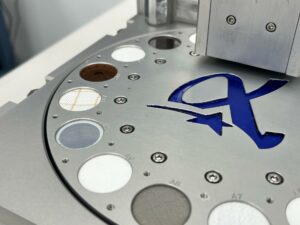
Regolith Adherence Characterization, or RAC, is one of 10 payloads set to be carried to the Moon by the Blue Ghost 1 lunar lander in 2025. Developed by Aegis Aerospace, RAC’s wheels feature a series of different sample materials, helping researchers to better understand how lunar dust repels or attaches to each.
Credit: NASA/Firefly
A number of instruments will gather data that will help NASA refine the technologies and practices required for safe and efficient lunar landings and operations, notoriously difficult tasks in the face of weak gravity, the absence of atmospheric friction, abrasive dust, and harsh temperatures swings. Instruments such as the Lunar GNSS Receiver Experiment (LuGRE) and Stereo Cameras for Lunar Plume Surface Studies (SCALPSS) will explore advanced navigation and landing safety measures, while retroreflectors and magnetotelluric sounders will contribute to lunar geophysics and fundamental physics research.
“We’ve got a nice variety of payloads on board. We’re going to be measuring heat flow from the interior of the Moon in order to better understand the interior structure. We’ve got payloads that will be looking at the structure of the Moon’s mantle by measuring electric and magnetic fields,” Watkins said.
Blue Ghost will orbit Earth for 25 days before executing a translunar injection that will send it on a 4-day journey to the Moon, where it will orbit for 16 days before attempting an autonomous soft landing, currently planned for March 2.
“While we recognize there will be challenges ahead, I’m confident Firefly’s Unstoppable Team is prepared to softly land Blue Ghost on the Moon and operate on this bold mission,” said Jason Kim, Chief Executive Officer of Firefly Aerospace, speaking at a NASA press conference. “After Blue Ghost lands on the Moon, we’ll be collecting critical payload science data throughout the entire [14 days of surface operations]. We’ll then wrap up the mission by capturing a solar eclipse and a lunar sunset in high-definition video, before operating several hours into the lunar night.”
“Towards the end of Blue Ghost Mission 1, we expect to capture a phenomenon documented by Eugene Cernan on Apollo 17 where he observed a horizon glow as the lunar dust levitated on the surface,” said Kim, in a Firefly press release. “As a tribute to the last Apollo Astronaut to walk on the Moon, we’re honored to have the opportunity to watch this incredible sight in high definition.”
To learn more about NASA’s CLPS initiative, click here.





